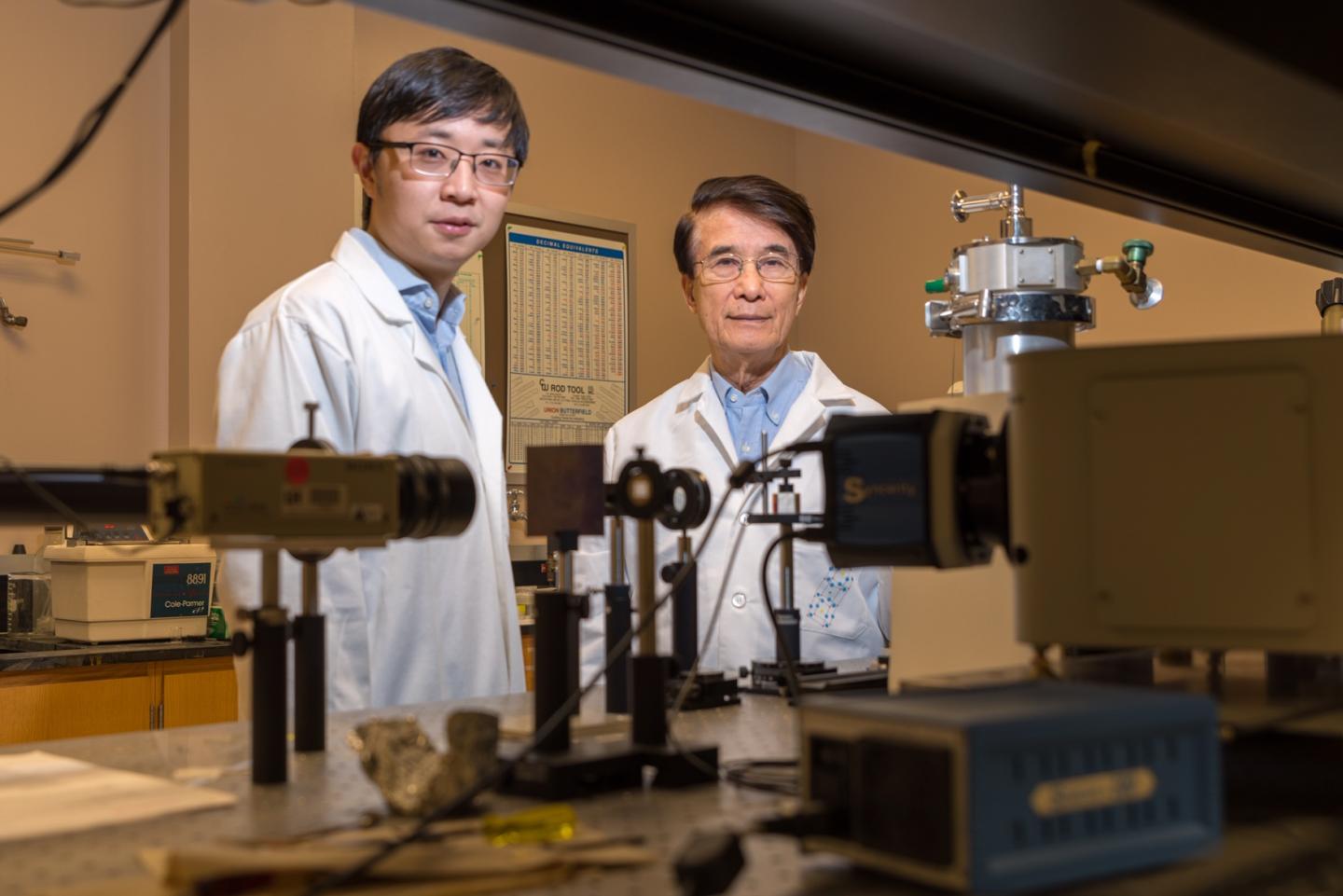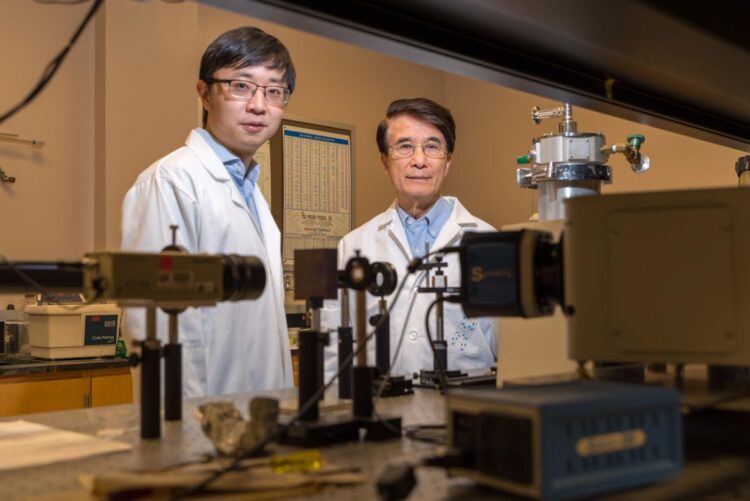Researchers report a compound capable of achieving skyrmion state at room temperature under pressure

Credit: Audrius Brazdeikis, University of Houston
The demands for data storage and processing have grown exponentially as the world becomes increasingly connected, emphasizing the need for new materials capable of more efficient data storage and data processing.
An international team of researchers, led by physicist Paul Ching-Wu Chu, founding director of the Texas Center for Superconductivity at the University of Houston, is reporting a new compound capable of maintaining its skyrmion properties at room temperature through the use of high pressure. The results also suggest the potential for using chemical pressure to maintain the properties at ambient pressure, offering promise for commercial applications.
The work is described in the Proceedings of the National Academy of Sciences.
A skyrmion is the smallest possible perturbation to a uniform magnet, a point-like region of reversed magnetization surrounded by a whirling twist of spins. These extremely small regions, along with the possibility of moving them using very little electrical current, make the materials hosting them promising candidates for high-density information storage. But the skyrmion state normally exists only at a very low and narrow temperature range. For example, in the compound Chu and colleagues studied, the skyrmion state normally exists only within a narrow temperature range of about 3 Kelvin degrees, between 55 K and 58.5 K (between -360.7 Fahrenheit and -354.4 Fahrenheit). That makes it impractical for most applications.
Working with a copper oxyselenide compound, Chu said the researchers were able to dramatically expand the temperature range at which the skyrmion state exists, up to to 300 degrees Kelvin, or about 80 degrees Fahrenheit, near room temperature. First author Liangzi Deng said they successfully detected the state at room temperature for the first time under 8 gigapascals, or GPa, of pressure, using a special technique he and colleagues developed. Deng is a researcher with the Texas Center for Superconductivity at UH (TcSUH).
Chu, the corresponding author for the work, said researchers also found that the copper oxyselenide compound undergoes different structural-phase transitions with increasing pressure, suggesting the possibility that the skyrmion state is more ubiquitous than previously thought.
“Our results suggest the insensitivity of the skyrmions to the underlying crystal lattices. More skyrmion material may be found in other compounds, as well,” Chu said.
The work suggests the pressure required to maintain the skyrmion state in the copper oxyselenide compound could be replicated chemically, allowing it to work under ambient pressure, another important requirement for potential commercial applications. That has some analogies to work Chu and his colleagues did with high-temperature superconductivity, announcing in 1987 that they had stabilized high-temperature superconductivity in YBCO (yttrium, barium, copper, and oxygen) by replacing ions in the compound with smaller isovalent ions.
###
In addition to Chu and Deng, researchers involved with the project include co-first author Hung-Cheng Wu, a visiting researcher at TcSUH from National Sun Yat-sen University in Taiwan; Alexander P. Litvinchuk and Rabin Dahal, both with TcSUH; Noah F. Q. Yuan of the Massachusetts Institute of Technology; Jey-Jau Lee of National Synchrotron Radiation Research Center in Taiwan; Helmuth Berger with the Institute of Physics of Complex Matter at the Ecole Polytechnique Federal de Lausanne in Switzerland; and Hung-Duen Yang with National Sun Yat-sen University.
Media Contact
Jeannie Kever
[email protected]
Original Source
https:/
Related Journal Article
http://dx.





